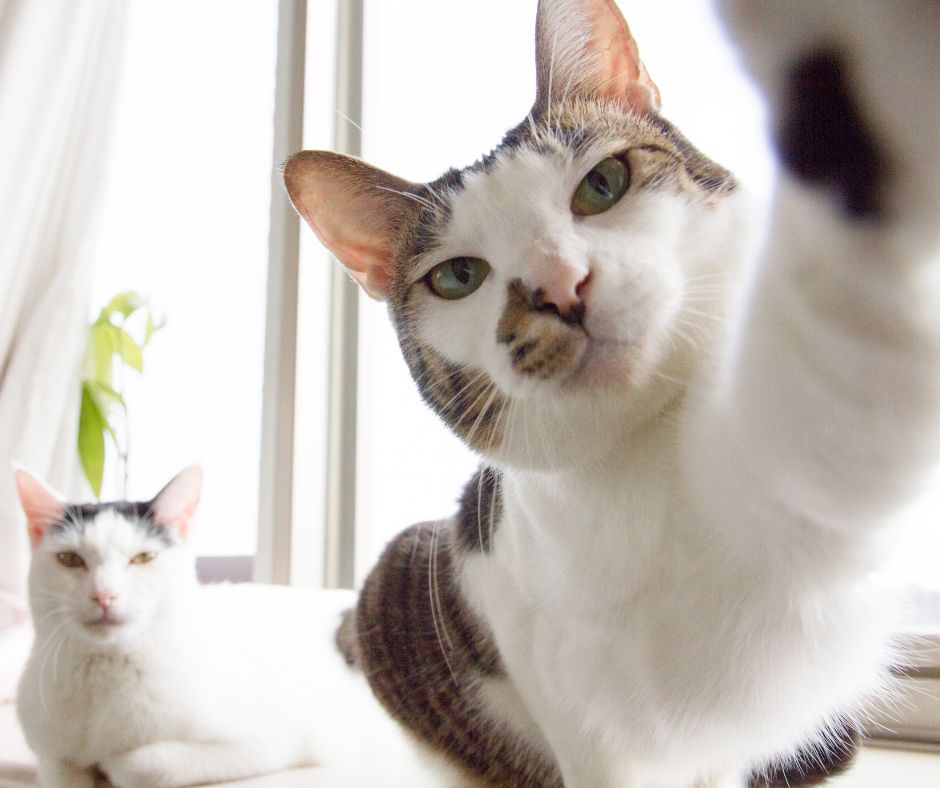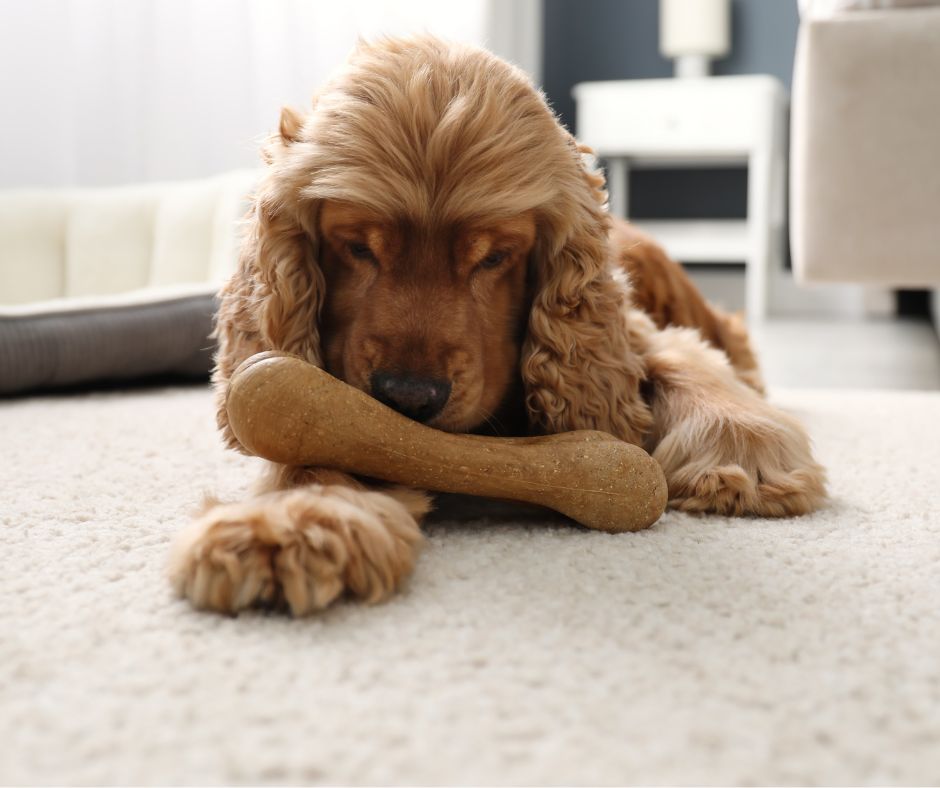- Home
- Fleas on Cats
- Are Cat Flea Collars Dangerous?
Are Cat Flea Collars Dangerous?
5 Important Things to Know
Are cat flea collars dangerous? It seems like they have always been a popular choice for pet owners when it comes to combating a flea problem.
These collars repel and kill fleas, offering a convenient first line of defense. They have been long as I can remember!
Yet, concerns about their safety have been growing. Cat lovers are unsure about the potential risks they may pose to their feline friends.
In this article:
Keep reading, or jump down to any section below using these quick links:
Let's explore their effectiveness and examine safety concerns associated with their use. It's a good idea to address these questions to ensure the well-being of our beloved furry family members.
Understanding Cat Flea Collars:

These specialized pet accessories are designed to control and prevent a flea infestation in cats.
They are worn around the neck area, where these pests often gather, and work by releasing chemicals or active ingredients that repel or kill fleas upon contact.
Some types release their ingredients which then spread throughout the skin and fur, providing whole-body protection.
These collars are available in various types and formulations, offering different options to suit their specific needs.
Different Flea Collars Available:
They can be categorized into two main types: traditional pesticide-based collars and newer, innovative alternatives.
Traditional Pesticide-Based Collars utilize chemicals such as pyrethroids or organophosphates, as active ingredients.
These chemicals are released slowly and provide continuous protection against fleas and ticks. These are the ones most people are thinking of when they ask, are cat flea collars dangerous?
Innovative Alternative Collars: In recent years, newer types of natural collars have emerged. They use alternative methods to repel or kill fleas.
These innovative collars often contain natural ingredients, essential oils, or other non-chemical repellents to deter fleas.
They are an effective alternative for cat owners who prefer non-chemical options or are concerned about the potential side effects of traditional pesticide-based collars.
How Cat Flea Collars Work
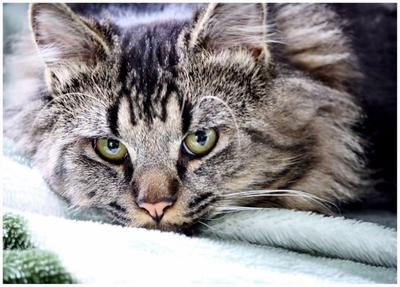
They work by releasing chemical compounds or natural ingredients to repel or kill these pests. The active ingredients in the collar penetrate the cat's fur and create a barrier on the cat's body.
Depending on the type of collar, the chemicals may be slowly released over time or activated by the cat's body heat, ensuring continuous protection.
Are Cat Flea Collars Dangerous? - Common Active Ingredients
Pyrethroids are a class of synthetic insecticides derived from natural compounds found in chrysanthemum flowers. They are commonly used in traditional pesticide-based collars due to their effectiveness. Examples of pyrethroids include permethrin and etofenprox.
Organophosphates are another group of insecticides used in some traditional flea collars. They work by disrupting the nervous system of fleas and ticks. Examples of organophosphates used in this way include tetrachlorvinphos and chlorpyrifos.
Natural Ingredients: Innovative, alternative natural flea collars often use natural ingredients, such as essential oils or plant-based extracts to repel these pests.
These may include oils derived from cedar, citronella, lavender, or eucalyptus. Natural ingredients provide an alternative option for cat owners seeking a more natural approach to their problem.
Currently, Seresto collars are very popular. They have two active ingredients. Flumethrin (4.5%) is a pyrethroid insecticide and imidacloprid (10%) which belongs to a new class of insecticide made to mimic nicotine called neonicotinoid.

Potential Dangers Associated with Cat Flea Collars
It is important to be aware of the potential risks and side effects they may pose to our feline companions. Understanding these dangers will allow you to take precautions and make informed decisions regarding the use of these collars on your cat.
Chemical Toxicity Risks

Traditional pesticide-based flea collars contain chemical compounds, such as pyrethroids and organophosphates, which are insecticides.
These ingredients are designed to kill fleas and ticks. However, if not used according to the manufacturer's instructions or if incorrect collars are used, they can be toxic to cats.
Health Risks and Potential Side Effects:
Cats may experience dangerous health effects if exposed to high levels of the active ingredients found in flea collars.
These may include symptoms such as:
- Excessive drooling
- Tremors
- Vomiting
- Diarrhea
- Skin irritation
- Respiratory distress
- Neurological issues
Cats with underlying health conditions or compromised immune systems may be particularly vulnerable to these risks.
Allergic Reactions and Sensitivities
Possibility of Cats Developing Allergies to Flea Collars:
Some cats may exhibit an allergic reaction or sensitivity to the chemicals present.
These allergic reactions can range from mild irritations to your pet's skin, such as itching and redness, to more severe symptoms like swelling, sores, or hair loss.
Identifying Signs and Symptoms of Allergic Reactions:
Keep a close eye on your kitty for any signs of allergic reactions. These may include excessive scratching, restlessness, agitation, redness or swelling around the neck area, or changes in behavior.
If any of these symptoms occur, remove the collar and consult with a veterinarian.
Risks for Vulnerable Groups: Kittens and Older Cats
Specific Considerations for Kittens:

Are cat flea collars dangerous? For kittens, they may be. Kittens have developing immune systems that may react differently to the chemicals present.
Choose one specifically designed for kittens and follow the age and weight restrictions provided. Additionally, close monitoring is necessary to ensure their safety.
Potential Health Risks Associated with Older Cats:
Older cats may have underlying health conditions or be more sensitive to the chemicals in flea collars. Consider any medical condition, overall health and consult with a veterinarian before using them.
They may recommend alternative flea and tick control methods or specific precautions to minimize any potential risks.
Safety Measures and Precautions
To ensure the safe use of cat flea collars and minimize potential risks to our feline companions, always follow safety measures and take necessary precautions.
If you choose to use commercial flea and tick collars, these steps can provide effective flea control while prioritizing your cats' well-being.
Reading and Understanding Flea Product Labels
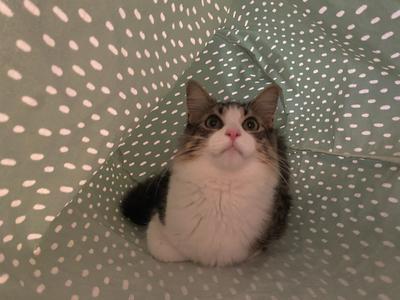
Before purchasing a new flea collar, carefully read and understand the product labels, including any warnings, precautions, or usage instructions provided by the manufacturer.
This information can help you determine if the collar is suitable for your cat and if there are any specific requirements for its use.
Look for cat flea collars that are specifically labeled for feline use. Ensure that the collar is appropriate for your cat's age, size, and weight.
Some collars may have age or weight restrictions, so it's important to follow these guidelines to prevent potential risks.
Never use a collar designed for an animal of a different species or size. Trimming a dog flea collar to make it smaller and putting it on a cat, or trimming a cat collar and putting it on a kitten could cause a toxic reaction.
Consultation with a Veterinarian
Consulting with a veterinarian before choosing a flea collar is always your best bet. Veterinarians can provide professional advice based on your cat's individual needs, health status, and lifestyle.
They can recommend the most suitable and safest flea collar option, taking into consideration any pre-existing health conditions or sensitivities your cat may have.
Veterinarians have a deep understanding of cat health and can guide you in selecting the appropriate flea control method.
Their expertise will guide you to make an informed decision, reducing the risk of side effects and still getting the best flea and tick prevention.
Proper Application and Fit
Ensure that the flea collar fits your cat properly. It should be snug enough to prevent your cat from easily slipping out of it but not too tight to cause discomfort or restrict movement.
Safety:
For outdoor cats, consider the possibility of the collar becoming caught on a branch or other outdoor hazard and your kitty being trapped. Look for quick release, easy release or breakaway options to avoid this danger.
Check the manufacturer's instructions on how to adjust the collar to achieve the right fit.
After fitting the collar, trim any excess length to prevent your cat from chewing or getting entangled in it.
Be careful not to trim it too short, as it may become ineffective in providing flea control.
Regularly inspect your cat's neck area for any signs of irritation, discomfort, or adverse reactions.
Watch their behavior and overall well-being to ensure the collar is not causing any undue stress or health issues. If you notice any concerns, promptly remove the collar and seek veterinary advice.
Consumer Experiences and Reviews
When asking “are cat flea collars dangerous?” it can be helpful to gather insight from other cat owners who have used these products. Consumer experiences, incident reports and reviews offer valuable information and perspectives.
Online Resources and Communities for Cat Owners
There are various online resources and communities dedicated to pet parents, where you can find reviews and discussions.
Websites, forums, and social media groups focused on cat care can provide insights into the experiences of other cat owners who have used flea collars.
When exploring online resources, prioritize reliable and credible sources that offer evidence-based information and a balanced view. Look for reputable websites, expert opinions, and testimonials from trusted individuals.
Online retailers often offer a multitude of customer reviews for just about any product you can imagine, and flea and tick products are no exception. Reading someone else's honest opinion may be the best way for you to decide whether to proceed.
Consider the severity and validity of the concerns expressed by cat owners. Keep in mind that individual experiences can vary, and some concerns may be specific to certain brands or specific cats.
- Take a balanced approach by remembering that people tend to share their unusual or negative experiences online more than uneventful ones.
Experiences and reviews shared by other cat owners can provide more insights into these products.
Remember that each cat is unique, and what works for one may not work for another. Individual sensitivities and health conditions can influence the outcome.
This is why it's crucial to consult with your veterinarian and consider the specific needs of your own cat when choosing a flea control product.
Regulatory Standards and Regulations
Regulatory standards and regulations play a vital role in ensuring consumer protection and product quality. Various organizations and agencies are responsible for overseeing the regulation of pet products. It's their job to ask "are cat flea collars dangerous?" - and recall them if the answer is yes.
Organizations Responsible for Pet Product Safety:
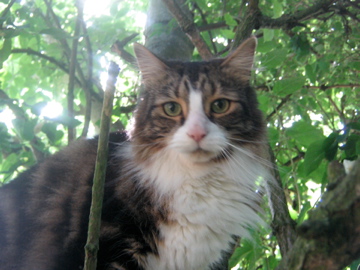
Regulatory bodies, such as the U.S. Food and Drug Administration (FDA) and the European Medicines Agency (EMA), are responsible for overseeing pet product safety.
These federal regulators establish guidelines and standards to protect the health and well-being of animals.
Regulatory standards provide a framework for manufacturers to develop and produce pet products to meet specific safety and quality criteria.
Existing Regulations for Cat Flea Collars
Current regulatory guidelines and requirements vary across different regions and countries.
For example, in the United States, the FDA regulates animal drugs, including flea collars, ensuring that they meet safety and efficacy standards.
In the European Union, they fall under the jurisdiction of the EMA or relevant national regulatory bodies.
Despite the oversight of regulatory authorities, there may be gaps and limitations in the existing regulations.
Some regulations may focus more on the safety of the active ingredients rather than the collar as a whole. Additionally, regulatory standards may evolve over time as new scientific data becomes available.
You will want to familiarize yourself with the regulatory landscape in your specific region. This information can help you assess the level of oversight and standards in place when making a decision.
Regulatory compliance does not guarantee absolute safety or effectiveness for every individual cat. Cats can have unique sensitivities or health conditions that may warrant additional precautions or considerations.
This is why consulting with your veterinarian is crucial. They will be happy to help in determining the most appropriate flea control method for your cat's specific needs.
So, Are Cat Flea Collars Dangerous?
They are convinient and may always remain a popular choice for cat owners. However, we must weigh the benefits against the potential risks associated with their use.
It ultimately comes down to personal choice. In the world of pet products (including pesticide-based flea control products), there are incidents of toxic reactions, pet hospitalizations and even deaths. Regulatory committees decide whether these should result in product recalls.
Some pet parents are satisfied when veterinarians and experts say that the vast majority of pets can safely use a product, and that the risk of adverse side effects is so low that it can be considered safe.
Others are not reassured by this, and not willing to take a chance that their pet could be harmed by the product.
There is no right or wrong answer. Are cat flea collars dangerous? If they are on the market (and not recalled), they have been deemed by regulators to be low-risk.
In essence, this means your healthy feline will likely be fine using it. It's up to you to decide whether that's good enough.
Making an informed decision involves learning about the different types available, including traditional pesticide-based collars and innovative alternatives.
Let's Recap:
The potential dangers mainly revolve around chemical toxicity risks, allergic reactions, and specific risks for vulnerable groups such as kittens and older cats.
By being aware of these risks, you can closely monitor your cat for any adverse effects.
While effective against fleas, improper use or overuse of these collars can lead to serious health consequences for cats.
Allergic reactions to the chemicals used can occur. Some cats develop skin irritations or excessive scratching, redness, and swelling.
Even the best flea collars may not be suitable for every cat, especially those with specific health conditions or sensitivities.
Alternative (natural) methods can provide peace of mind to cat owners seeking safer approaches to flea prevention and control.
In exploring alternative flea control methods, consider non-chemical options such as topical flea and tick treatments or natural remedies.
These natural alternatives may offer additional choices for those seeking different approaches or minimizing exposure to chemical ingredients.
The decision to use cat flea collars should be made after careful consideration of the potential risks and benefits, consulting with a veterinarian, and assessing the specific needs of your cat. Every cat is unique, and what works for one may not work for another.
To avoid infestations and manage pests, remember to:
- Consult your vet
- Carefully follow package instructions, and
- Consider alternative options for young kittens, elderly cats, or those with medical conditions
Once you discover what works best in your unique household, you can effectively manage fleas while keeping your feline family members safe and comfortable!
Top of: Are Cat Flea Collars Dangerous
Sources:
SerestoTM for cats. The innovative flea and tick collar. | Seresto. (n.d.). https://www.seresto.nz/for-cats/

